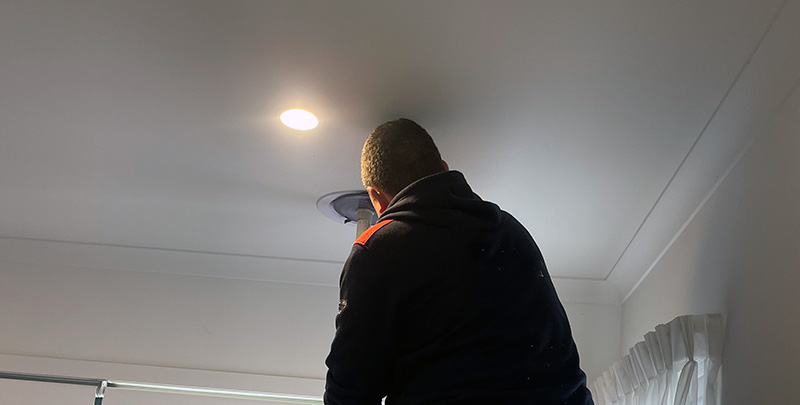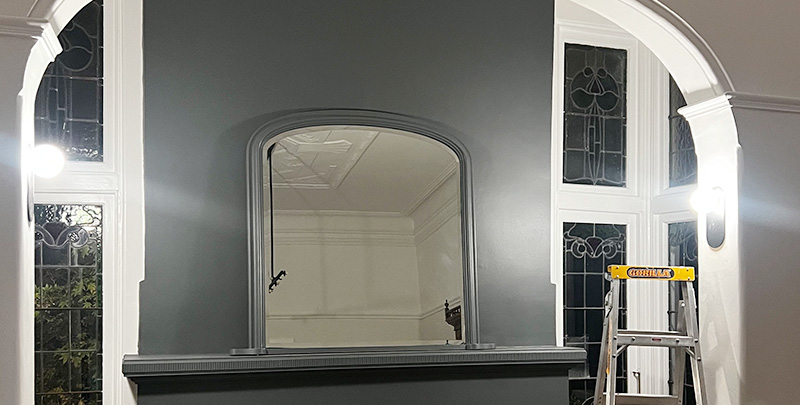A Comprehensive Guide to Indoor Lighting

Indoor lighting is crucial in Australian homes, creating a comfortable and inviting atmosphere for residents and guests alike. Beyond merely illuminating spaces, well-thought-out interior lighting design can significantly impact the functionality and aesthetics of each room.
In this comprehensive guide, we will delve into the intricacies of indoor lighting, from its fundamental aspects to designing with different fixtures and lighting controls, as well as setting the mood for other rooms. Whether renovating or building a new home in Australia, understanding indoor lighting is the key to transforming your living spaces into cozy sanctuaries.
The Fundamentals of Indoor Lighting
Types of Indoor Lighting
In Australian homes, indoor lighting encompasses three primary types: ambient, task, and accent lighting. Ambient lighting is the primary illumination source, providing a comfortable brightness to navigate, shop, and socialise.
Task lighting, however, focuses on specific activities such as reading, cooking, or working. Lastly, accent lighting highlights architectural features, artwork, or other decorative elements, adding depth and visual interest to your rooms.
Understanding Light Bulbs
When it comes to light bulbs in Australia, homeowners have several options. Traditional incandescent bulbs have been replaced mainly by energy-efficient alternatives like LED (Light Emitting Diode), CFL (Compact Fluorescent Lamp), and halogen bulbs.
LED bulbs are trendy in Australian homes due to their long lifespan, energy efficiency, and reduced environmental impact. However, it’s essential to consider the pros and cons of each type of product to make informed decisions for your lighting needs.
Colour Temperature and Its Effects
In Australia, understanding colour temperature is vital to achieving the desired ambience in your home. Colour temperature, measured in Kelvin (K), determines whether the light appears warm (lower Kelvin) or excellent (higher Kelvin).
Warm light (around 2700K to 3000K) creates a cosy and intimate atmosphere, suitable for living spaces and bedrooms. Cool light (about 3200k-4500k) is more neutral light and is also referred to as “natural”, while brighter light (4500k and brighter) is known as daylight. By selecting the appropriate colour temperature, you can set the mood and create a welcoming environment in every room.

Why is Indoor Lighting Important?
Indoor lighting is essential for several reasons, as it plays a crucial role in enhancing the functionality, aesthetics, and overall ambience of living spaces. Here are some key reasons why indoor lighting is essential:
- Functionality: Proper indoor lighting ensures that occupants can navigate through rooms safely and perform and complete various tasks with ease. Task lighting, such as reading lamps or kitchen under-cabinet lights, illuminates specific areas to facilitate activities like reading, cooking, or working.
- Safety and security: Adequate indoor lighting helps prevent accidents and promotes a sense of security within the home or office. Well-lit staircases, hallways, and entrances reduce the risk of tripping or falling, especially during nighttime.
- Mood and ambiance: Indoor lighting significantly impacts the mood and ambience of the work area in a room. Warm and soft lighting can create a cozy, inviting, relaxed atmosphere, while brighter lights can energise and uplift the space.
- Health and well-being: Proper lighting can influence our circadian rhythm, affecting our sleep-wake cycle and overall well-being. Exposure to natural light during the day and dimmer, warmer lights in the evening can improve sleep patterns and promote better health.
- Enhancing interior design: Lighting is an integral part of interior design, highlighting architectural features, various materials, artwork, and decorative elements. It can transform a space, making it more visually appealing and aesthetically pleasing.
- We are highlighting focal points: Indoor lighting can draw attention to specific focal points, such as a side table, statement piece of furniture, artwork, or a feature wall, adding depth and character to the room.
- Personalisation: With a wide variety of lighting fixtures and options available, indoor lighting allows homeowners to express their style and tailor the ambience of each room to their preferences.
- Energy efficiency: Energy-efficient lighting options, such as LED bulbs and smart lighting controls, can help reduce energy consumption and lower utility bills.
- Flexibility: Dimmers and adjustable lighting fixtures offer flexibility in controlling light intensity, allowing occupants to adapt the lighting to different activities or occasions.
- Creating an inviting environment: When done right, indoor lighting can create a warm and inviting environment for family members and guests to relax, making them feel more comfortable and at home.
In summary, indoor lighting goes beyond simply providing illumination; it plays a vital role in shaping how we live and interact within our living spaces. Understanding the importance of indoor lighting can help homeowners make informed decisions to ensure they create well-lit, functional, and visually appealing homes.
Designing with Indoor Lighting
Creating a Lighting Plan
Designing a lighting plan is essential for Australian homeowners looking to optimise their indoor lighting. Consider factors such as the layout of each room, the presence of natural light, and the specific activities in each area. A well-thought-out lighting plan ensures that your home remains functional and aesthetically pleasing.
Lighting Fixtures and Styles
In Australia, lighting fixtures come in many styles, each with a unique charm. Chandeliers add elegance to dining rooms; pendant lights offer a modern touch to kitchens; ceiling and wall sconces create a cozy ambience in living spaces. Understanding how each fixture complements your room’s design will help you make the right choices to enhance your home’s overall aesthetic.

Lighting Controls and Dimmers
Efficient lighting controls and dimmers are becoming increasingly popular. These devices offer the flexibility to adjust the intensity of the light, thereby saving energy and customising the look of the ambience to suit different occasions.
Modern homes in Australia often incorporate intelligent lighting solutions that can be controlled remotely through smartphones or voice-activated devices, adding a touch of convenience and efficiency to indoor lighting.
Setting the Mood with Indoor Lighting
Let’s set the mood for different rooms and different occasions.
Lighting for Different Rooms
Each room in your home has unique lighting needs. In the living room, soft and warm lighting creates a welcoming atmosphere for relaxation and socialising. Ambient and task lighting balance is necessary for reading and peace in the bedroom. The kitchen requires bright task lighting for cooking and food preparation. By tailoring the lighting to the specific functions of each room, you can enhance their usability and charm.
Using Lighting for Decoration
Beyond its functional aspects, lighting can be a powerful decorative element in your home. Uplights can accentuate architectural features and designs, while carefully positioned spotlights can highlight artwork or cherished decor items. For the creatively inclined, DIY lighting projects offer an opportunity to personalise your indoor lighting and add a personality to your living spaces.
The Vitality of Indoor Lighting
In conclusion, indoor lighting is vital to creating a comfortable and inviting living space in Australian homes. You can transform your rooms into warm and welcoming oases by understanding the different types of lighting, light bulbs, colour temperature, and design principles.
Whether building a new home or renovating an existing one, experimenting with a wide selection of different lighting options will help you find what suits your style and needs best. You can also contact professionals in lighting and fixing lighting issues. With the right indoor lighting choices, your Australian home can radiate the perfect ambience for every occasion.
Please note: This information is provided for advice purposes only. Regulations differ from state to state, so please consult your local authorities or an industry professional before proceeding with any work. See our Terms & Conditions here.